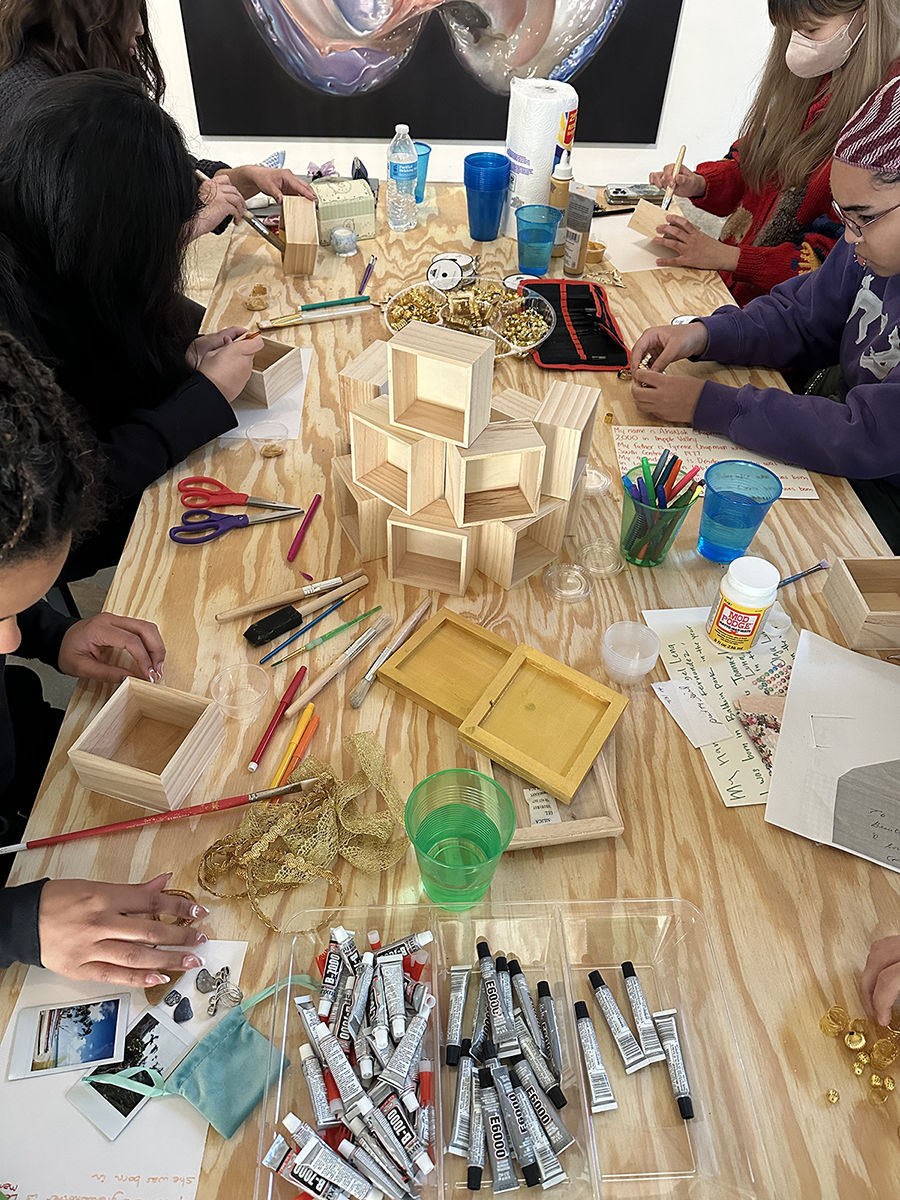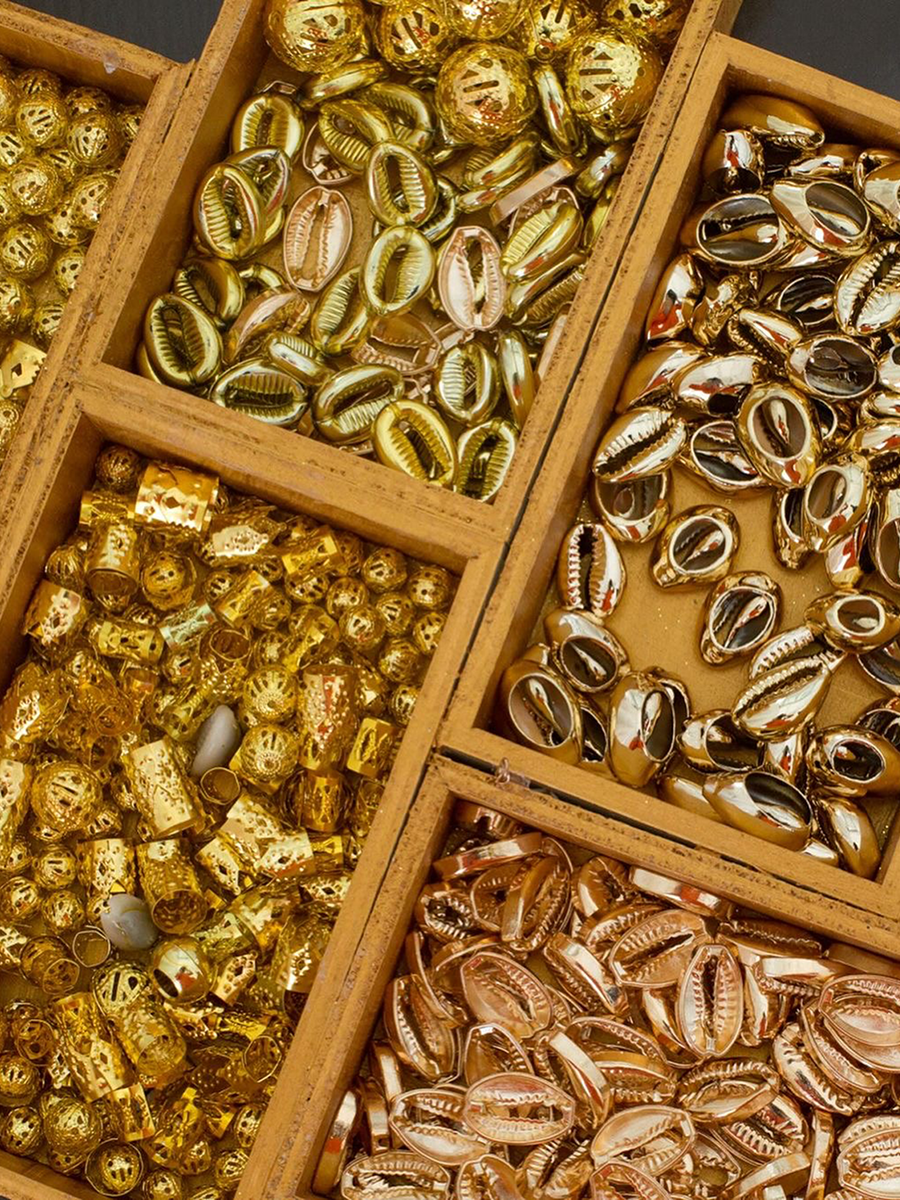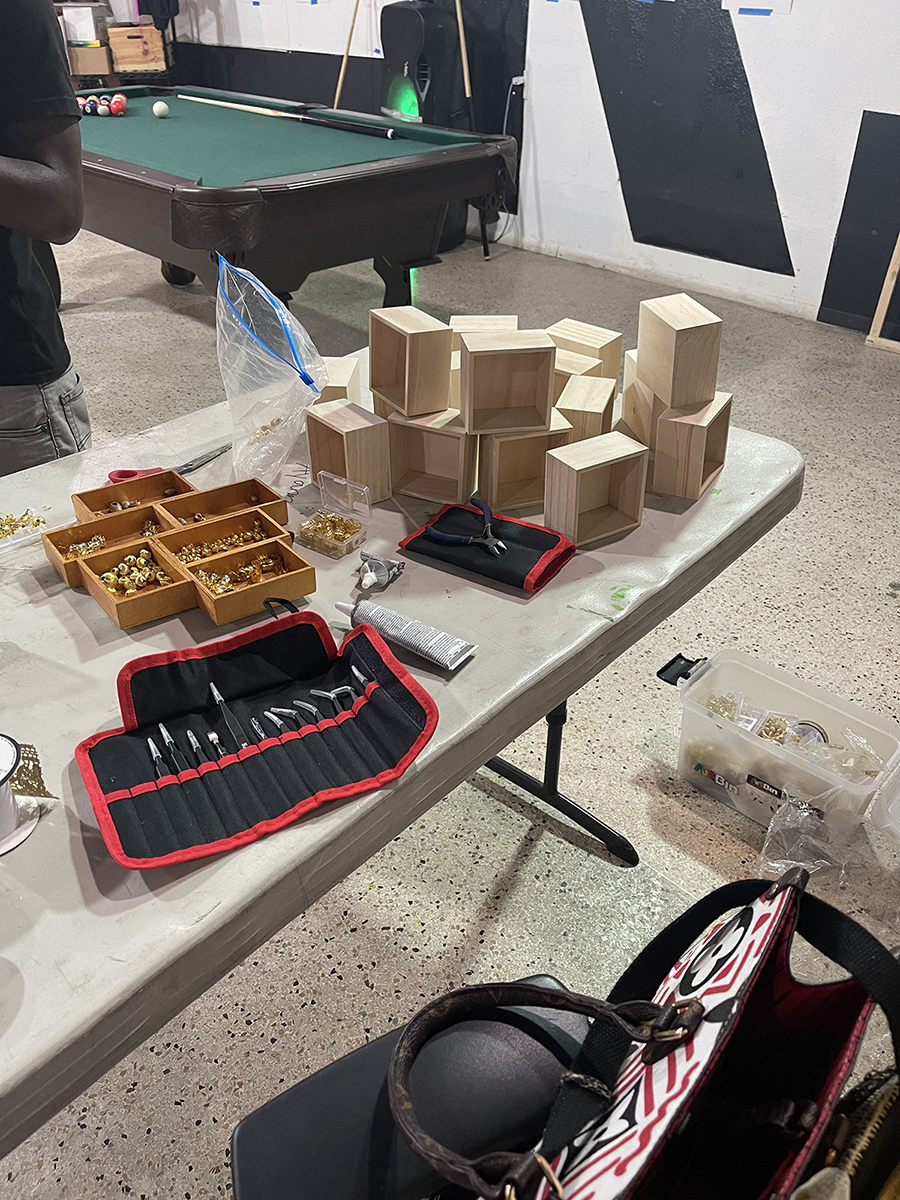What do we owe to the people who came before us and how do we remember them? For artist and educator Loni Johnson, remembrance isn’t passive. It’s an act of resistance, reclamation, and radical care. Rooted in her upbringing in the American South and the cultural heat of Miami, Johnson’s practice blends performance, altar-making, and community engagement to honour the sacred stories of Black and Brown people. In Things We Hold Sacred, her workshop for Mobilizing Citizenship in autumn 2023, Johnson invited participants to build personal altars using objects, images, and memory. Through writing, reflection, and the tactile work of creation, participants confronted questions of ancestry, identity, grief, and healing. What follows is a guide and a testimony: part workshop framework, part personal reflection on why memory matters and how the creative process can reconnect us to where we come from.
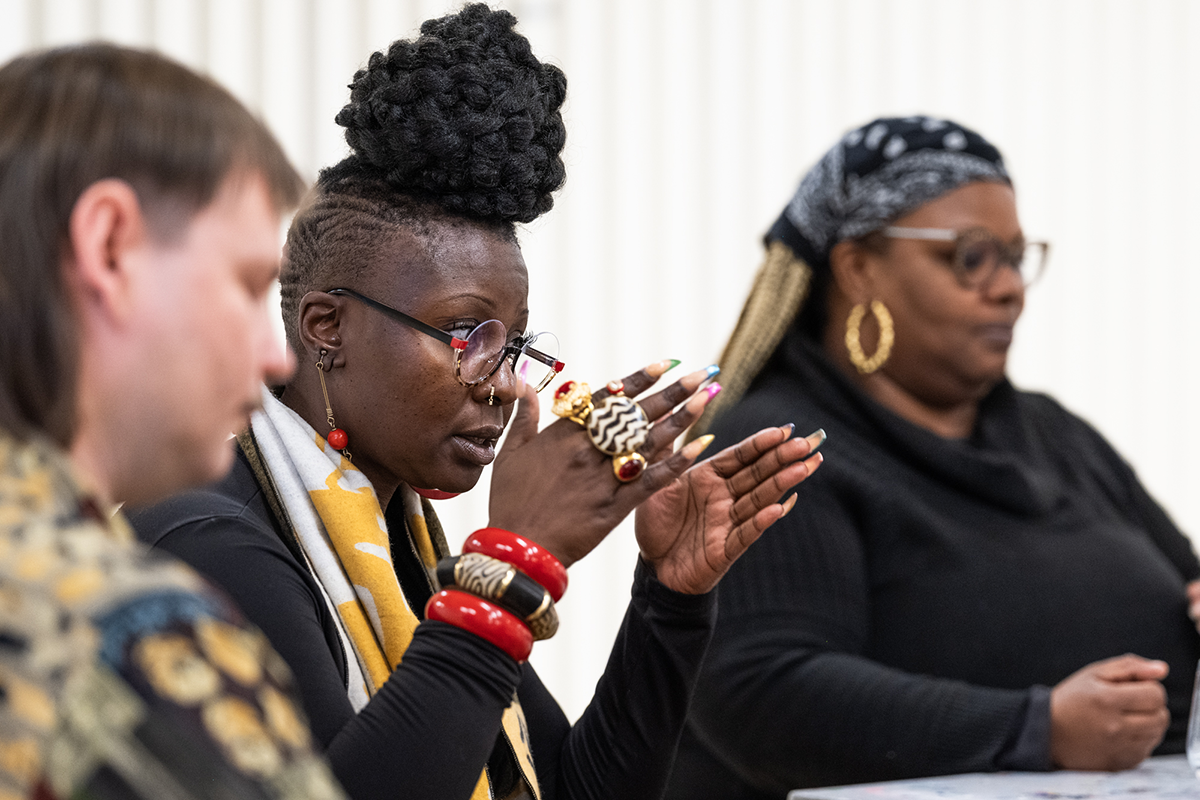
(Loni Johnson, as told to Lee Heinemann)
As artists, it’s our responsibility to take on the role of the memory keepers, the griots. Where I am—the United States; the American South; Miami, Florida—there is an erasure of Black history. I have taken it upon myself to understand and present how Black and Brown folks honour our ancestors and ensure that stories of our histories are told.
As artists, it’s our responsibility to take on the role of the memory keepers, the griots.
My assemblage and performance work merges traditional methods of remembrance with contemporary ways of remembering to create new traditions for honouring the past. I see my work as a way of building community and bridging gaps between groups of people.
In live activations, I bring folks to sites that need to be acknowledged as specific to Black experience. These performances highlight places and histories that audiences may not have had access to. I have created site-specific works at Virginia Key Beach—which many people don’t know was the designated Black Beach—and Miami Beach, which was (and I believe still is) a sundown town where Black people are not welcome after dark. There’s energy and residue in these places, and memory in the land. It is cliche, but if we don’t know where we came from, we can’t move forward.
For Remnants, my 2021 exhibition at Locust Projects, I created an installation of altars using photos of women in my family and everyday objects I collect to signify aspects of Black girlhood and womanness. The gallery is in Miami’s Little Haiti neighbourhood. Previously, I had heard from so many Black and Brown folks who walked past the location but never felt like they could enter. Out of a desire to create space for this community, I hosted three workshops, offering my materials and altar-making practice to folks and inviting them to make an object to honour someone. It was fulfilling to sit in the circle with folks and see how willingly they shared their stories. I began to realize that, if I’m interested in building community through this work, these workshops could be a way to make that a tangible part of my practice.
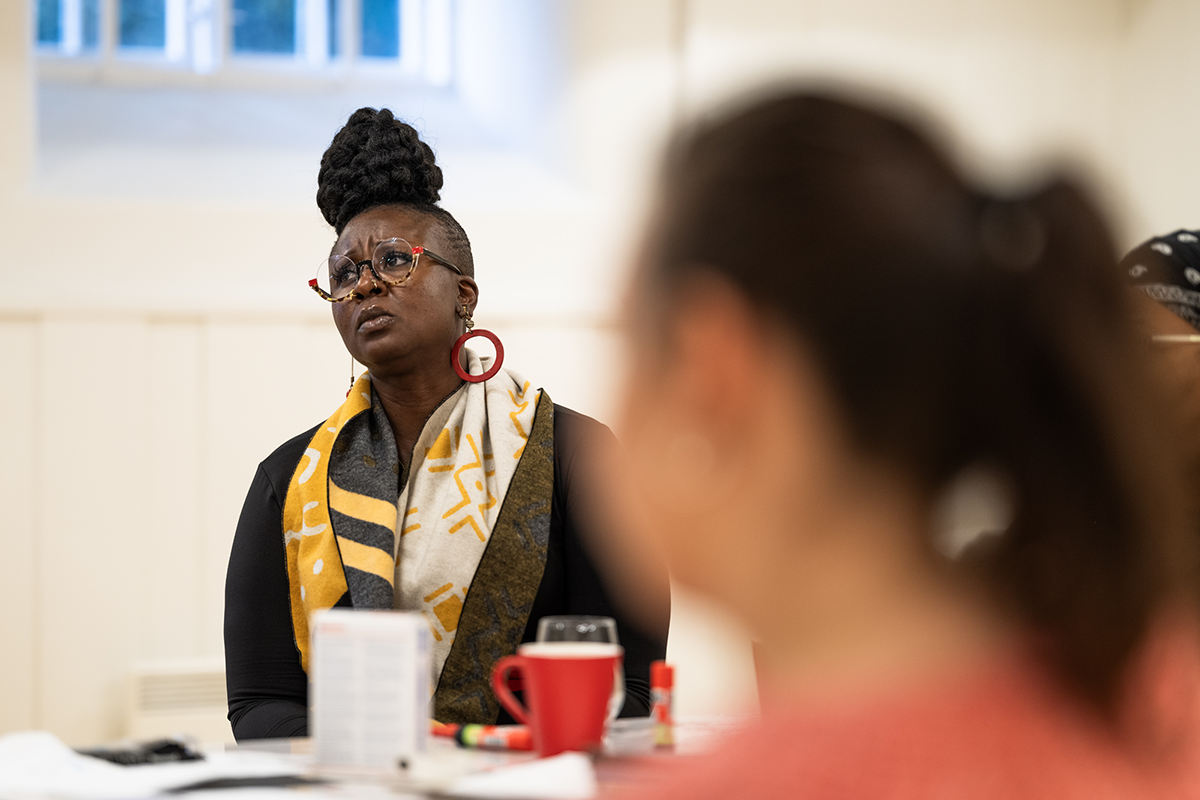
It has been an organic evolution of my work to create space for folks to heal and grieve. Throughout my life, I have this gift that draws people to tell me their story. Our society makes it seem normal that we grieve in solitude. Alone. But that’s not always been the case for Black and Brown folks. We don’t have to grieve alone. We can hold space for us to do it together, and if I can create space for that, I need to do it.
Our society makes it seem normal that we grieve in solitude.
With the support of a grant, I was able to bring altar-making to more community groups, including those focused on Brown and Black youth (organisations like Girl Power, Healing and Justice Center, the Miles Girl Academy), as well as adults and elementary school students. Because I’ve now shared it with so many ages and demographics, I believe this workshop can be adapted to work for anyone.
In this workshop, the act of making and creating the altar is as important as the conversation, and the facilitator must be as vulnerable as the space they’re trying to create. Sometimes that means making an altar alongside the group or asking questions to help participants open up:
- What did you bring?
- Who do you want to honour, and why?
- Who is this person to you?
- What’s the last memory with this person?
The workshop is most successful when there is time to build a rapport with the group. Giving people advance notice to bring objects with them—things connected to the person they’re honouring, even if it’s just a picture—tends to allow for a more meaningful experience.
The facilitator can also support participants who are still unsure of who they’d like to honour, or those who are not ready to open up to the group. Not everybody will be down to go that deep. For participants who need help getting started, ask: Who’s your favorite writer that’s no longer here? Who’s your favorite person that you don’t see every day?
Participants could also create an altar for themselves or for their inner child. You could ask:
If you could make an altar for your 4- or 5-year-old self, what would that look like?
What would an altar to a cause or topic you’re passionate about look like?
My hope is that anyone can look at my work or experience this workshop and consider who they are and where they come from.
My hope is that anyone can look at my work or experience this workshop and consider who they are and where they come from.
Objective
This altar-making workshop invites guests to use meaningful objects—such as photographs, memorabilia, crystals, jewellery, and more—to build small altars as offerings to their ancestors. The facilitator will guide participants to contemplate how we claim, navigate, and hold space; how ancestral and historical memory informs where, when, and how we occupy spaces; and how we carry and honour our ancestors in the spaces we move through.
Materials
Preparation of the materials should be done before the workshop begins. It is ideal to have all materials laid out on tables.
- Unfinished wooden boxes of various sizes
- Scissors
- Images/photos
- Gold acrylic paint
- Acrylic paint
- Brushes
- Printouts of Who Am I and From Which I Came writing prompts (see below)
- Paint markers (oil- or water-based)
- Mod Podge (matte version)
- E6000 glue (mini tubes)
- Fabric swatches
- Cowrie shells (plain and gold)
- Coloured felt
- Lace trimming
- Variety of beads, especially gold
- Printed paper (e.g., origami paper)
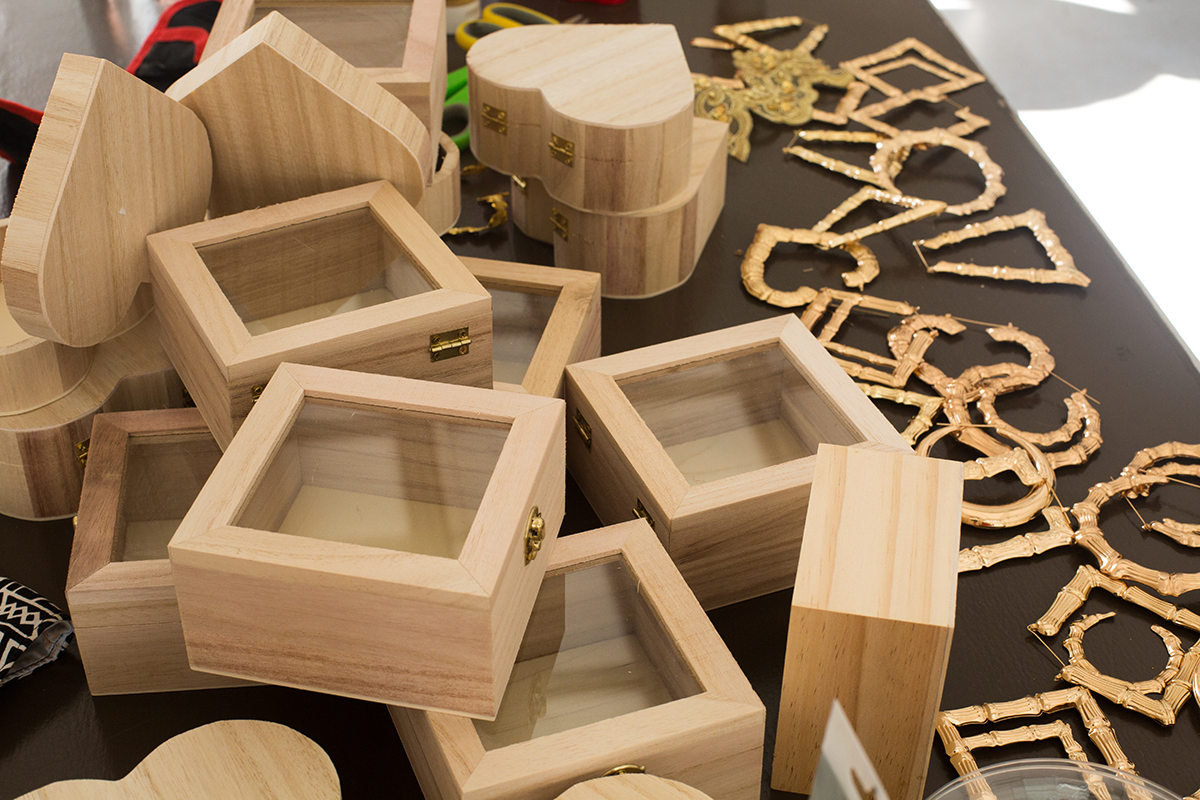
Preparation (as needed)
These writing prompts invite each participant to reflect on the personal characteristics that make them who they are. They also offer a chance for participants to think about their lineage and ancestry.
Complete each line and add up to two more lines to give detail.
Who Am I?
They say that I am .
- But I know that I am .
- The place that I call home is .
- I feel safe when .
- I feel the most afraid when .
- I am proud when .
- I see myself as .
- I wish I could .
- I love .
- My name is .
From Which I Came
Facilitators can adapt the prompt if participants are uncomfortable using their mother as a reference. Based on past experience, some participants may choose to honour an alternative parent or guardian instead.
My name is (participant’s name) . and I was born in (year of birth) in (place of birth) .
My mother’s name is (participant’s mother’s name) and she was born in (year of birth) in (place of birth) .
My grandmother’s name is (participant’s grandmother’s name) and she was born in (year of birth) in (place of birth) .
My grandmother’s mother’s name is (participant’s grandmother’s mother’s name) and she was born in (year of birth) in (place of birth) .
Activity Steps
Step 1
Facilitator will begin the workshop with a presentation of Loni Johnson’s artistic practice: Loni Johnson Presentation for Lesson Plan—Stavanger.
5–10 minutes for reflections/questions of the work from participants
Step 2
Facilitator will hand out the creative writing prompt exercises Who Am I and From Which I Came. Participants will be asked to complete the exercises with the group. TAs will encourage the participants to:
- Be descriptive.
- Be creative.
- But most importantly, be honest and transparent.
25–30 minutes with time for participants to share included
Step 3
After the participants complete the prompts, the group will gather their materials for the art-making activity. The facilitator should encourage participants to be intentional in choosing the person they want to honour.
The following questions could be asked as instructional tools during the art-making to help engage participants as they create their pieces:
- Who is this person?
- Why should they be honoured?
- What are things that remind me of this person?
- What impact has this person had on my life?
60–90 minutes allotted for art-making
Step 4
Once art-making is finished, each participant will share their altar piece and engage in a conversation around their object.
Facilitators could pose the following questions to guide the discussion:
- Who is this person to you and why are they significant to you?
- Are there specific objects that you identify as a connection to the person?
- If there was something that you wanted to say to them, what would it be and why?
- Where are you going to put your object and why? Does the location of the object hold significance?
15–20 minutes
